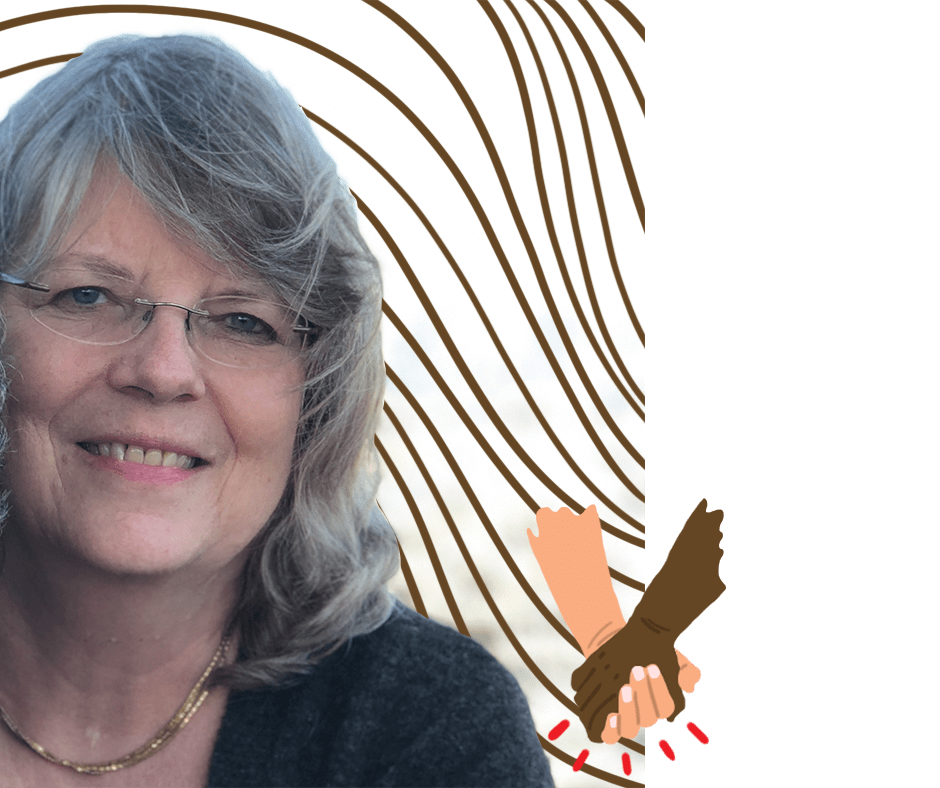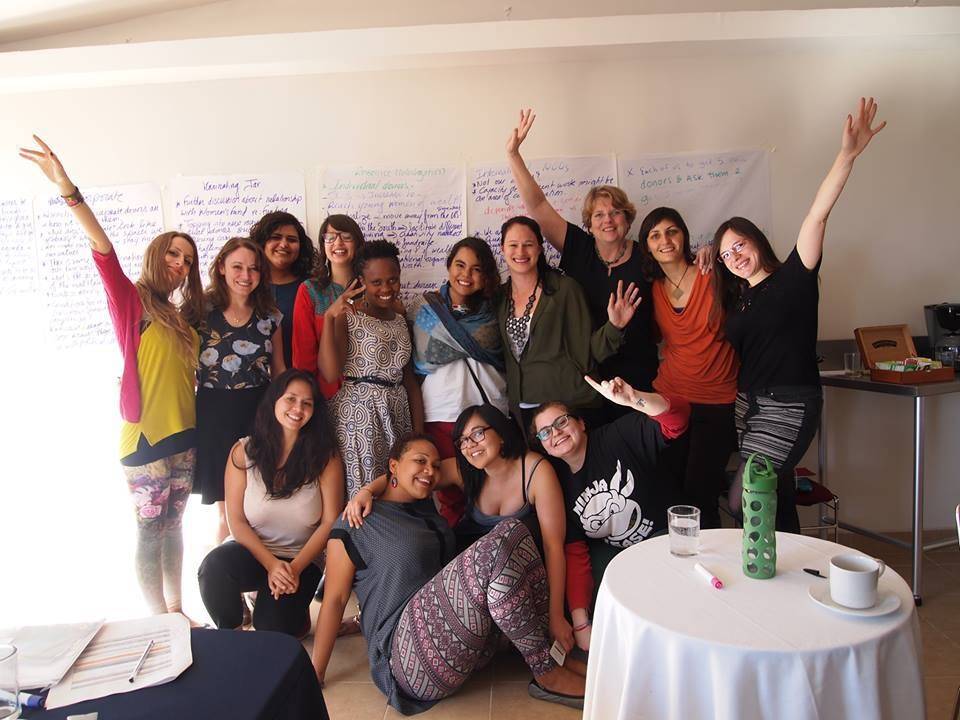Ana Criquillion is a long-term feminist and serial founder: From Puntos de Encuentro to FCAM, from Calala – Fondo de Mujeres to FRIDA, to Partido de la Izquierda Erotica, Manifesta and many more. In addition to being a founding advisor, Ana played many important roles at FRIDA, including Finance Advisor and Advisor to the Board.

“I met my ex-husband in France when I was seventeen, fell pregnant, and decided to go with him to Nicaragua. When I arrived, I was nineteen, and already had a kid by then. Youth pregnancy was a good start to wondering about women’s rights.” Ana moved to Nicaragua during a long and bloody dictatorship under Somoza. “It was really difficult to live here in those times. There was a lot of repression and assassinations, particularly against young people. Everybody was suspect of being a part of the guerrilla and what was going to be the revolution. For the first six or seven years that I lived in Nicaragua, I was linked to people who were part of the Frente Sandinista de Liberación Nacional, the guerilla organisation that was trying to overthrow the dictatorship. I knew a lot of people. I was at a student age, so a lot of my friends were students, and most of them were involved in some way, although it was clandestine, nobody knew formally.”
“Within this context, I connected with women of a very poor neighbourhood in Managua, and started to meet with them. They were connected to the Catholic church, actually, and we started to talk about our lives as women. I was very young then, but this is where I discovered that the unfairness I was seeing in personal aspects regarding my own life was not unique. A lot of women experienced similar situations. In those groups, we were coming from very different backgrounds: I was the only one that could read a book fluently. We started to read some books – by chance, because during that time, you could not find a book about feminism – and we started to read out loud the books we could find.”
A year and a half after she had had her first daughter, Ana had her second child. “I got divorced before the revolution came into power. My ex-husband managed to get to me in some ways through my kids, and there was a struggle for more than ten years to be able to share custody of my kids…that definitely was very important in my feminist trajectory. It made me radicalise it in some way, and see how systems in power can actually own your life.” After the triumph of the revolution in 1979, Ana started working for the government in the creation of the first women’s institute, which became the Ministry of Women. She didn’t stay too long. “Even though it was a leftist revolutionary government, it was not my thing…on the one hand, the new government wanted to acknowledge women’s rights on certain things, but they were very afraid of feminism. They thought that feminism was going to divide the people and the revolution. Feminism was a bad word. It was not really welcome.” She decided to push the feminist agenda from other directions. “I knew that my thing was grassroots activism, organisation and movement building. This was my passion, so I went to the Rural Workers’ Union and stayed there for seven years.”
By the end of the 1990s, Ana was feeling the need to start an NGO. “It was very difficult to keep in communication with women’s groups that were existing around… when the Frente Sandinista lost the election in 1990, we decided to start Puntos de Encuentro, to make sure we could keep people connected. The idea was to influence public opinion around the feminist agenda, and at the same time help strengthen the feminist movement in Nicaragua.” For Puntos de Encuentro, young people were the priority. “As young women, we were convinced that we needed to have more links with young feminists that could be existing and nobody really knew about. They were more invisible. Later, Puntos de Encuentro was doing very well, and I saw that they don’t need me so much anymore. So I began to create a women’s fund in Central America – Fondos Centroamericano de Mujeres (FCAM). That was in 2003, and it was the first women’s fund in Central America. At FCAM, again, the priority was young feminists. Its main mission was to strengthen young feminist organisations and groups across the region.”
It was at FCAM that the participative model of grant-making that FRIDA would inherit was developed. “One of the things we didn’t want was to create tensions among the feminist movements in Central America around money. We wanted to make [the selection process] very democratic. We certainly didn’t want us to be the ones making the decisions about who should get the funding, with people lobbying us in order to get grants. The funding in Nicaragua at the time was scarce. People were not receiving a lot of money, especially women’s organisations. Secondly, we wanted people to get to know what everybody was doing. One of the most important parts of [the selection process] was to make sure that people knew what was happening around the region, so that they could not only choose the next grantees, but actually get in touch with each other. So the process was to have people meeting, physically. Our first big grantees meeting was with everybody together: four of the four countries that we were working with could meet each other and say, ‘Ah, hey, I voted for you!’ and ‘You did? That’s great!’ and so on, and then learn from each other and monitor one another in some way.”
In the beginning, we were four or five people working as staff at FCAM, and we were scared. ‘What if they don’t choose the right groups?’
‘What if they discriminate against lesbians or sex workers?’
Just because they were young feminists didn’t mean there wasn’t still a lot of prejudice, even within the movement. “So we were afraid that groups that had much more difficulties to be visible would be discriminated against. But it didn’t happen. We were very clear in our call for proposals that we wanted to give a voice and priority to groups that have been historically marginalised, and it worked. People actually chose those groups and we didn’t have the issue we were fearing. People were actually very enthusiastic about the process.”
In 2007, Ana moved to San Francisco to create a sister organisation for FCAM, which would be the Central American Women’s Fund. “While I was there, I had a very close relationship with AWID, and Lydia Alpízar. I knew Lydia since she was a kid in some way, because she was participating in Puntos de Encuentros’ activities before. I had conversations frequently with Lydia, and with Cindy from AWID as well. One day – I don’t know how the conversation came to the table – but we thought, why don’t we create a women’s fund for young feminists globally, just like FCAM, but in the global environment? AWID already had its programme for young feminists, so for Lydia and Cindy, it made absolute sense. I can’t remember whether they contacted me, or I contacted them, but that was how I first got in touch with what was going to be FRIDA.
“From the beginning, it was really global, and I liked that. It was something that got me really enthusiastic. We needed to have a legal registration at some point to be able to open a bank account and receive money without having to be dependent on other organisations, but at the same time, we didn’t want to institutionalise FRIDA. We wanted to keep FRIDA agile and mobile. We actually kept this happening over the years, and that’s impressive, because FRIDA is now bigger, much bigger.”

The intergenerational nature of FRIDA is, for Ana, a critical aspect of FRIDA’s creation and continued activism. There was a need to be “conscious that there are power relationships between older women and young women that exist and we cannot deny, that there is discrimination against young women – all around us, but also within the feminist movement, for sure. We can react as much as we can, and we can try to deny and make jokes about it, but it still is there, and it actually exists.”
“It has not been easy. I could feel the pain for some advisors who started with FRIDA in their thirties and were not thirty anymore. They actually went into the situation and said, we need to leave room for younger feminists. I think it will always be a challenge for FRIDA to make sure we open doors for younger feminists – even younger than who they are now – really young feminists, and to make sure that is happening.
The older women within FRIDA can still collaborate in different ways, but we don’t need to show up there. I have not been very good in participating in the recollecting of FRIDA’s history in some way because of that. I generally don’t like publicity, but also, while it’s good to acknowledge where you are coming from, okay, now it’s your life..you are who you are because of you. You could have rejected everything from your mom and said, ‘Okay, that’s it, I don’t like it, so no.’ But you didn’t, so what you’ve inherited, you’ve enriched, you have made it yours. There is a delicate line between acknowledging this intergenerational contribution – not making it invisible, because that would be unfair – and at the same time, make sure that it doesn’t take over everything.”
“So,” I can hear Ana’s smile in her voice, “I trust you that you are going to do that quite well, ya?”